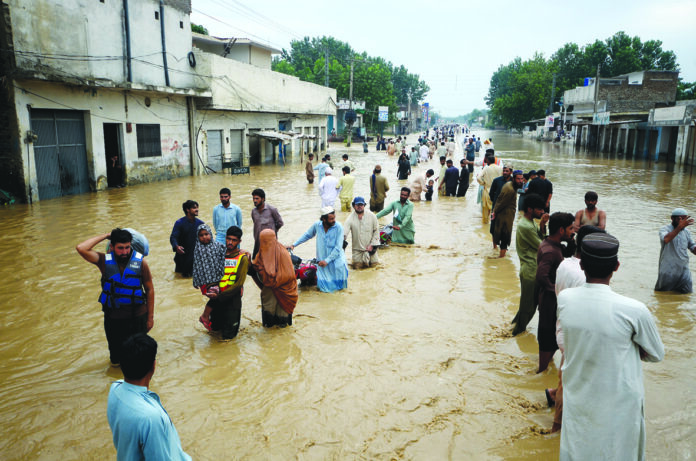Climate change is a growing phenomenon that has far-reaching implications for the world. The devastation it has caused is beyond measure and curtailing it is becoming a fairy tale with each passing day. Similarly, Pakistan, which produces less than one percent of the world’s carbon footprint, has been affected the worst in recent years.
According to the Global Climate Risk Index, Pakistan is the fifth climate-vulnerable country globally and has suffered almost $3.8 billion in economic losses since 1999. Moreover, climate action requires a lot of financial investments to withstand the impacts of climate change. Therefore, climate finance is a vital area to talk about as it helps countries to mitigate the devastation caused by climate change by renewable energies, such as wind and solar.
The current climate scenario in Pakistan has a grim status. The global warming causing/ significant climate change has placed Pakistan in a very vulnerable place. The country faces a significant change in the average temperature rise of 1.3°C to 4.9°C by the 2090s. This makes Pakistan the 18th country out of 191 countries in the world to have the highest disaster risk level. It has led to rising sea levels along the Karachi coast to 1.1 mm each year. Such an increase in temperature is causing extreme climate events such as droughts, heavy rains, and floods.
Considering the overall scenario of Pakistan in terms of climate change the role of climate finance becomes more important than ever before. It is a means of providing financial resources and tools to combat climate change. Although there is no agreed definition of climate finance, it is a much-needed aspect of mitigating climate change as it brings large-scale investments crucially required to reduce emissions. Additionally, the financial resources are devoted to developing countries in assisting them in addressing climate change. The financial resources are stipulated to be $100 billion a year as agreed upon in the 2009 Copenhagen Climate Change Conference. However, the commitment to providing financial assistance to vulnerable and low-income countries has not been met.
Similarly, Pakistan is also affected by the discrepancies in the overall process of climate financing. Former Foreign Minister Bilawal Bhutto Zardari said, “Helping Pakistan in the climate crisis is not a charity from Western countries; the people of Pakistan are paying the price for the industrialization of richer nations.” In return, the international donors recognized the need to support Pakistan in economic and technical needs resulting in strategically oriented documents, such as the Resilient Recovery, Rehabilitation, and Reconstruction Framework (4RF) in the aftermath of the 2022 floods.
However, such commitments and implementation of the projects face many challenges. The first is the lack of coordination among different implementing institutions and a pressing need for financing. Secondly, Pakistan needs $80 billion in flood protection plans outlined in the 4RF strategy. Unfortunately, the track record of Pakistan in terms of benefiting from international climate finance is poor due to its institutional and capacity challenges.
The case of Pakistan is as clear as a day, it has been highly impacted by climate and has proven its commitment towards climate actions. This is clearly shown by having a separate climate change ministry and a Ten Billion Tree Tsunami program. Therefore, the debt-for-climate swap must be opted by Pakistan to relieve its economic burden.
Therefore, Pakistan must address such issues by initiating programs discussing climate at a lower level that is easily understood by the general masses. The focus should be more on the tehsil and district administrations to produce localized climate action plans best suited for the specific region. Even more, Pakistan is an agrarian country that should focus on farmers and vulnerable communities with climate-related disaster insurance by creating bonds between them and the government. It should also encourage climate entrepreneurship amongst the youth of the country. The main goal should be to facilitate collaborations between private, public, and international organizations for the smooth transition of initiation and completion of climate-resilient projects.
On the part of international governments and organizations, Pakistan should be given the option of concessional finance. Pakistan can meet the goals of climate action if finance is provided by financial institutions such as development banks and multilateral funds. For instance, a debt-for-climate swap is a mechanism that allows a portion of the foreign debt of a developing country to be forgiven in exchange for the commitment to investing in biodiversity and environmental policies.
The case of Pakistan is as clear as a day, it has been highly impacted by climate and has proven its commitment towards climate actions. This is clearly shown by having a separate climate change ministry and a Ten Billion Tree Tsunami program. Therefore, the debt-for-climate swap must be opted by Pakistan to relieve its economic burden.






















